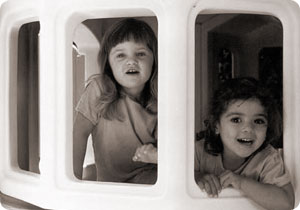 |
 |
|||||||||
Population Insitute Monterey County Weekly articles Articles reprinted courtesy
of Monterey County
Weekly |
 |
|||
|
Carmel Magazine The Weston Collective Keeps Darkroom Photography Alive | Winter 2022Breaking the Cycle, One Child at a Time | Winter 2018 Investing in Great Futures | Winter 2018 Short Cuts: Giving Back | Winter 2018 Healing Through Horsepower | Holiday 2015 The Sky's the Limit | Spring/Summer 2011 Second Chances | Holiday 2010 Building Blocks | Winter 2010 Philanthropy from the Heart | Holiday 2009 Ag Against Hunger Delivers from Field to Table | Spring/Summer 2009 Arming Kids with Golf Clubs and Self Confidence | Spring/Summer 2009 Carmel Library Matches Young Readers and Dogs | Winter 2009 Colleagues of the Arts Open Doors to a Better Future | Winter 2009 Youth Fitness Program Is a Runaway Success | Winter 2009 A Perfect Place to Play | Holiday 2008 Special Parents Helping Special Kids | Summer/Fall 2008 Kids Helping Kids Help Themselves | Winter 2008 Message in a Book | Holiday 2007 Rising International Gives Real Hope | Holiday 2007 Volunteer Center for United Way, Monterey County | Summer/Fall 2007 Making Kids Count | June, 2006 Pulling At Art Strings | May, 2006 Weaving to Independence | Winter 2006 |
||||
Articles from the Population Reference Bureau |
||||
| Studies from
the Hewlett Foundation's Children and Youth Program Visit the Hewlett Foundation website |
||||
Connected by 25: Improving the Life Chances of the Country's Most Vulnerable YouthThis paper identifies the four groups of youth who are at the highest risk of long-term unemployment, incarceration, and social disconnection. It discusses a number of policy directions for helping these youth make successful transitions into adulthood. A Portrait of Well-Being in Early AdulthoodThis paper examines the well-being of young adults in the U.S. who are approximately 25 years of age. It provides a descriptive portrait of educational attainment, success in connecting with the labor force, and family life, with special looks at several ethnic groups. Serving High-Risk Youth: Lessons from Research and ProgrammingThis paper reviews the outcomes from most of the major federal programs designed to help youth connect with the labor force over the past thirty years. It identifies elements that increase the effectiveness of programs. Taking Stock: A Review of U.S. Youth Employment Policy and ProspectsThis paper reviews which young adults are most likely to have major problems connecting with the labor force and proposes a series of programs and policies to respond to the needs of this group. |
Improving the Economic and Life Outcomes of At-Risk YouthThis paper lays out a conceptual framework for designing programs focused on disconnected youth and proposes a specific major experimental program. Using Community Colleges to Reconnect Disconnected YouthThis paper argues that community colleges should be a major institution helping disconnected youth reconnect to education. It discusses a variety of measures community colleges would need to take to do this effectively. Promoting Prevention, Targeting Teens: An Emerging Agenda to Reduce Domestic ViolenceThis paper reviews the history of efforts to respond to domestic violence in the U.S. Based on the finding that the highest rates of domestic violence take place among couples ages 16-24, whether in marriage, cohabitation, or dating, the authors propose new means of preventing and responding to domestic violence. Voices for Change: Leadership Development for Communities of Color to Improve Their Policy ImpactThis paper proposes ways that foundation and government support should be used to create and enhance programs that help leaders of community-based programs in communities of color become more effective leaders in the policy arena. |
|||
| Information
for Parents from the National Campaign to Prevent Teen Pregnancy Visit teenpregnancy.org website |
||||
| Parents Parent Power: What Parents Need to Know and Do to Help Prevent Teen Pregnancy | Spanish version This accessible publication provides a synthesis of research on parental influence as well as tips for parents Ten Tips for ParentsThe National Campaign to Prevent Teen Pregnancy has reviewed recent research about parental influences on children's sexual behavior and talked to many experts in the field, as well as to teens and parents themselves. From these sources, it is clear that there is much parents and adults can do to reduce the risk of kids becoming pregnant before they've grown up. Talking Back: What Teens Want Parents to Know About Preventing Teen PregnancyTeens get advice on all kinds of issues from their parents, teachers, and other adults, but they don’t often get asked to offer it. Consequently, the National Campaign continues to ask teens a direct question: If you could offer your parents and other adults advice about how to help you and your friends avoid pregnancy, what would it be? The following tips represent the major answers to this question that we have heard from teens over the years. Parents Matter: Tips for Raising TeenagersOriginally prepared for a White House conference on teens back in 2000, this pamphlet discusses those things parents can do that help teens safely navigate adolescence. |
Research With One Voice 2004: Adults and Teens Sound Off About Teen PregnancyOur annual national survey presented in chartbook fashion. Emerging Answers: Research Findings on Programs to Reduce Teen PregnancyThis is a PDF summary of a report on program effectiveness. Making the List: Understanding, Selecting, and Replicating Effective Teen Pregnancy Prevention ProgramsThis report helps readers navigate various lists of "effective" programs and offers advise on program replication. Various "Science Says" research briefsAbout 15 briefs and growing, topics range from where teens first have sex to parental influence to "what works." Various research publications on "what works." This section contains full-length publications on topics ranging from effective afterschool programs to programs for middle school aged adolescents. DataNational data on teen pregnancy Detailed, interactive database of state information |
|||
| Research Briefs
from Child Trends Visit childtrends.org website |
||||
| Parent-Teen
Relationshps and Interactions: Far More Positive Than Not | December
2004 Grandma and Grandpa Taking Care of the Kids: Patterns of Involvement | July 2004 Children in Foster Homes: How Are They Faring? | December 2003 The First Time: Characteristics of Teens' First Sexual Relationships | August 2003 Left Unsupervised: A Look at the Most Vulnerable Children | April 2003 |
||||
| Research Briefs
from the Child Trends DataBank Visit childtrendsdatabank.org website |
||||
| Indicators
of Early School Success and Child Well-Being | October 2004 Violence in the Lives of Children | August 2003 |
||||
| The Women's
Fund of Monterey County Visit womensfundmonterey.org website |
||||
| Women & Girl's Report | 2004 | ||||
| Advocates
for Youth Visit advocatesforyouth.org website |
||||
Parents’
Sex Ed Center | For parents |
||||
| SIECUS Visit siecus.org website |
||||
The
Truth About Condoms | 2002 |
||||
About the Network for Family Life Education: With our twenty-four year history, the Network for Family Life Education is one of the leading national nonprofit organizations working on adolescent sexuality education issues in the United States. We believe that knowledge about human sexuality is helpful, not harmful, and therefore every teenager has a fundamental right to accurate and complete information about sexuality without censorship and to have his or her questions answered. Therefore, we advocate for comprehensive sexuality education throughout the United States. Children of Alcoholics: It's Real, Here's the Deal Foreign
Teens More Successful at Preventing Pregnancy Teen
Girls Respond to FDA Ruling on Emergency Contraception Internet
Filters Keep Teens in the Dark Mom,
Dad...Let’s Talk About Sex Knowledge
Is the Best Protection Disordered
Eating: A Common Struggle for Teens |
||||